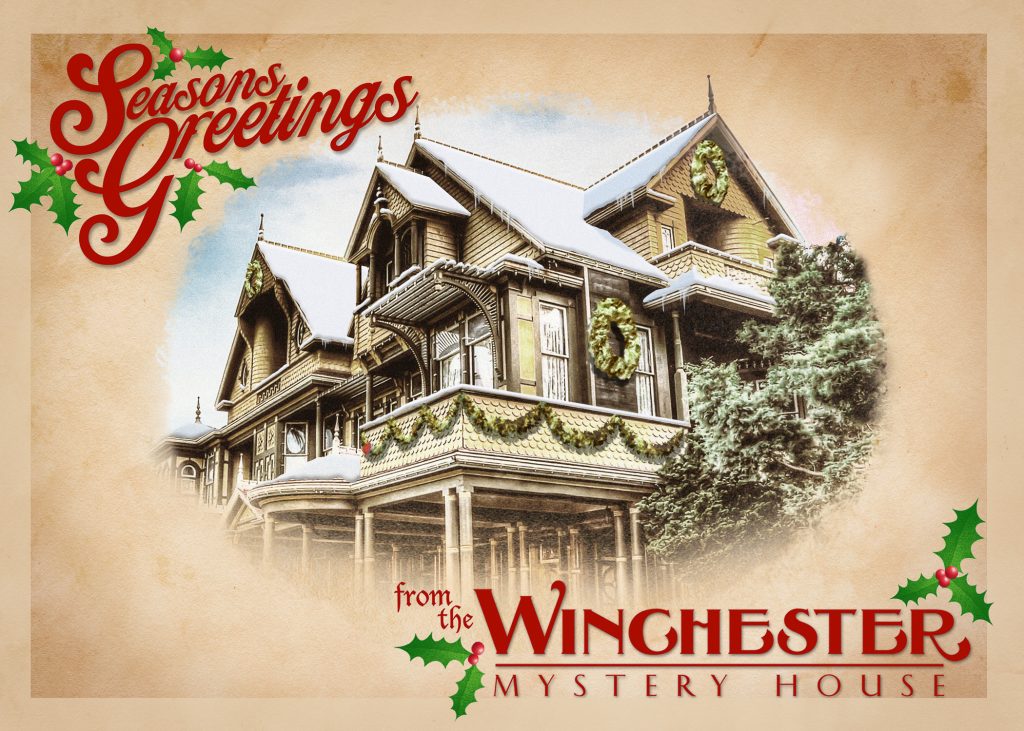Did you know that some of our most cherished Christmas customs arose in the Victorian era, when Sarah Winchester was a girl growing up in Connecticut? The shimmering Christmas tree, the warm exchange of Christmas cards, hanging stockings by the fire—each of these traditions has its own special story.
The Christmas Tree
The Christmas tree dates back to the 1500s: a German custom that arrived in Britain around 1800 through marriage: because Queen Victoria’s mother, grandmother and husband, Prince Albert all came from Germany, she grew up with the custom, and continued it with her children. From the royal family, it spread to the nobility, and finally to the general populace.
Reaching American shores around 1850, when Sarah Winchester was about 10 years old, the custom soon began to spread on this side of the Atlantic.
Early Christmas trees were usually small, and sat on a table with gifts all around them. They were decorated with fruits, nuts, and small toys for the children. In the 1700s, candles were added, and the tree was lighted as the whole family watched.
Christmas Cards

The exchange of beautiful cards with holiday greetings began in Britain, just around the time Sarah Winchester was born. With the introduction of the “Uniform Penny Post” in 1840, citizens could send a card or letter anywhere in Britain for the price of a penny stamp. A smart London businessman, Sir Henry Cole, sensed an opportunity and commissioned about 2,000 cards to be printed with Christmas greetings. He sold them in his London shop for a shilling each, and the Christmas card was born.
The idea caught on fast in Great Britain, but took about 30 years to make its way to America, where it arrived in the 1870s, when Sarah was a young matron living in the Winchester family mansion on Prospect Street in New Haven, Connecticut.
Christmas Stockings
So many of us fondly remember the excitement of waking early on Christmas morning and hurrying to discover what treats Santa Claus had left in our stocking by the fireplace. The tradition of hanging a stocking near the hearth is much older than the others: some say it originated in Scandinavia, where children would leave carrots, straw, or other treats in their boots for the god Odin’s flying horse. Odin would reward them by replacing the food with candy or small gifts. The custom survived in northern Europe after Christianity took hold, and came to us via Britain, where people would leave mince pies, sherry, and carrots for Saint Nicholas and his reindeer, and a stocking near the fireplace in hopes that it would be filled with treats by morning.
In Victorian times, stockings often had a penny in the toe, and were then filled with nuts, sweets, and fruit—especially oranges, which were a luxury for most people. In the colder climate of England, orange trees could only be grown in the greenhouses of the wealthy.
We hope all of you enjoy your holiday customs, whatever they may be. Happy Holidays from all of us here at the Winchester Mystery House!

